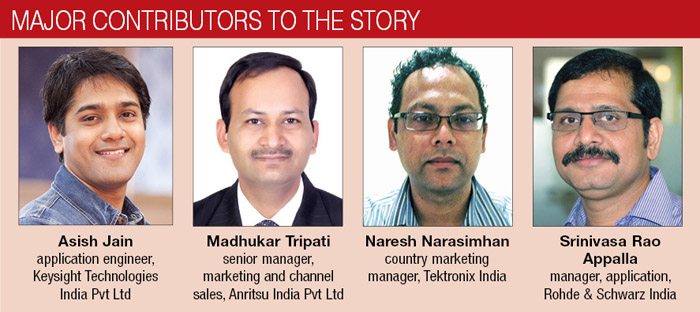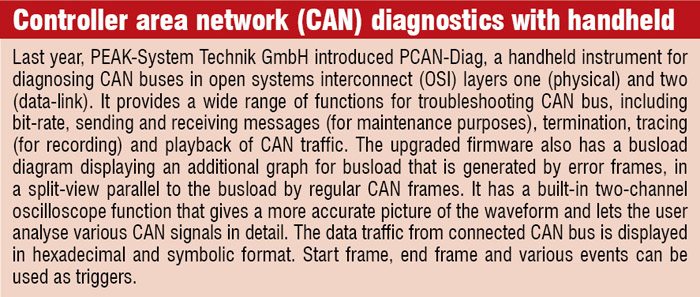Application-specific devices and GUI. More integration would, in normal cases, affect the ease-of-use as the system becomes more complex with each instrument added to it. But the complexity also depends on what all instruments are being integrating into one. Maintaining the simple user interface (UI), while incorporating more devices, is one key challenge that test and measurement device manufacturers face with integration. Making any device application-specific solves this. This means that the latest handhelds can be configured with multiple capabilities, like spectrum analysis, network analysis, and cable and antenna testing, in a single unit. These have operating modes that are flexible enough to meet the needs of novice and expert users.


For example, if the user wants to work on any of the mentioned solutions, he can set up the instrument in a mode that matches the requirements of that particular application. New features necessary for each application are unlocked with a software licence key and do not need hardware upgrade. So, there is a hierarchy of applications and then a hierarchy of individual settings for each of these applications.
Precision and accuracy. Even though field applications need not necessarily have the best precision, accuracy and repeatability, handheld devices are no longer relaxed on these fronts. Srinivasa Rao Appalla of R&S comments, “Handheld models released these days that are suitable for outdoor use do not compromise much on performance against their benchtop counterparts.” With the FSH spectrum analyser from R&S, base-station carrier frequency measurements can be made with the accuracy of an atomic clock.
Ruggedness. Since instruments used in the field may have to withstand rough environmental conditions like rain, dust and heat, and have more chances of falling down, these should be good enough to operate in rough conditions without affecting their performance. Instruments like FieldFox do not have large cooling fans or vents; these dissipate heat through the body. This avoids percolation of dust and humidity inside the device when operating in a rugged environment, thereby avoiding damage to the instrument.
Remote control. Many manufacturers now let users control the entire instrument through a remote device like a desktop, laptop, tablet or smartphone using a software or an app. This enhances portability and lets users take measurements in harsh conditions without actually being present there.
Warming up faster. Every device has a warm-up time—time between turning on the device to get it up-and-running. Technologies like InstaAlign speed up this warming process. This means that the user can get the best accuracy even when the device has just started operating.
Why benchtop
Handhelds can never replace benchtop equipment, and vice versa. The kind of scenarios and tests the technicians or engineers do in the field will be different from those performed in a research and development lab. Benchtops are often used during the design phase for testing and debugging. It provides engineers with a deeper, involved, precise and repeatable analysis. Meanwhile, handheld instruments have a basic capability, and perhaps a few advanced capabilities that are required by or could be an added advantage for people in the field.
The author is a dancer, karaoke aficionado, and a technical correspondent at EFY. Find her on Twitter @AnuBomb.






